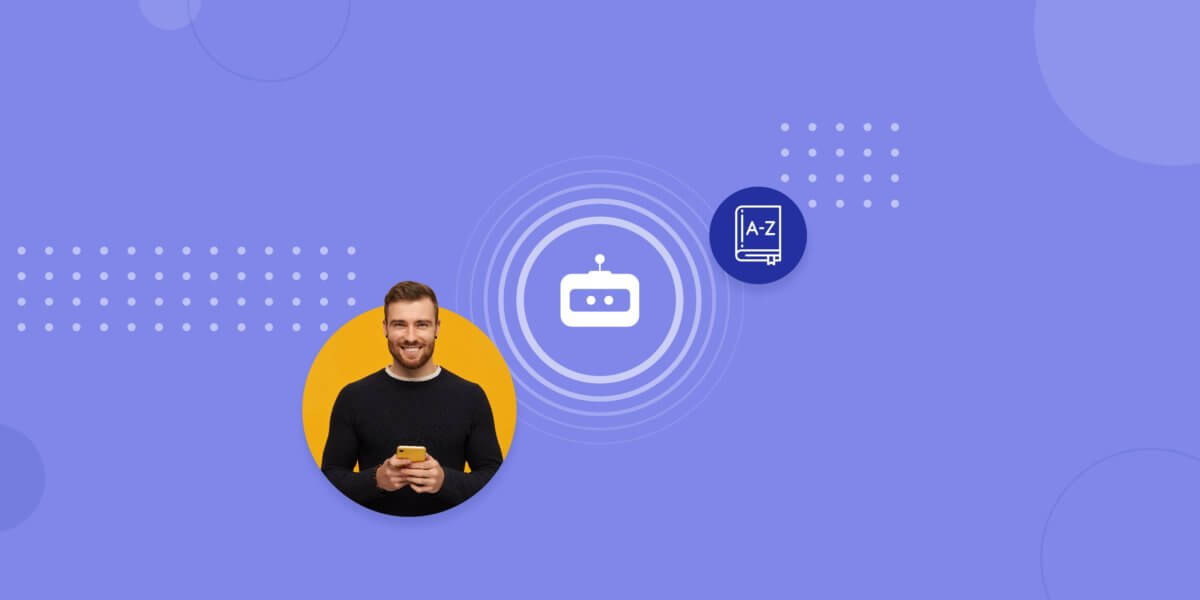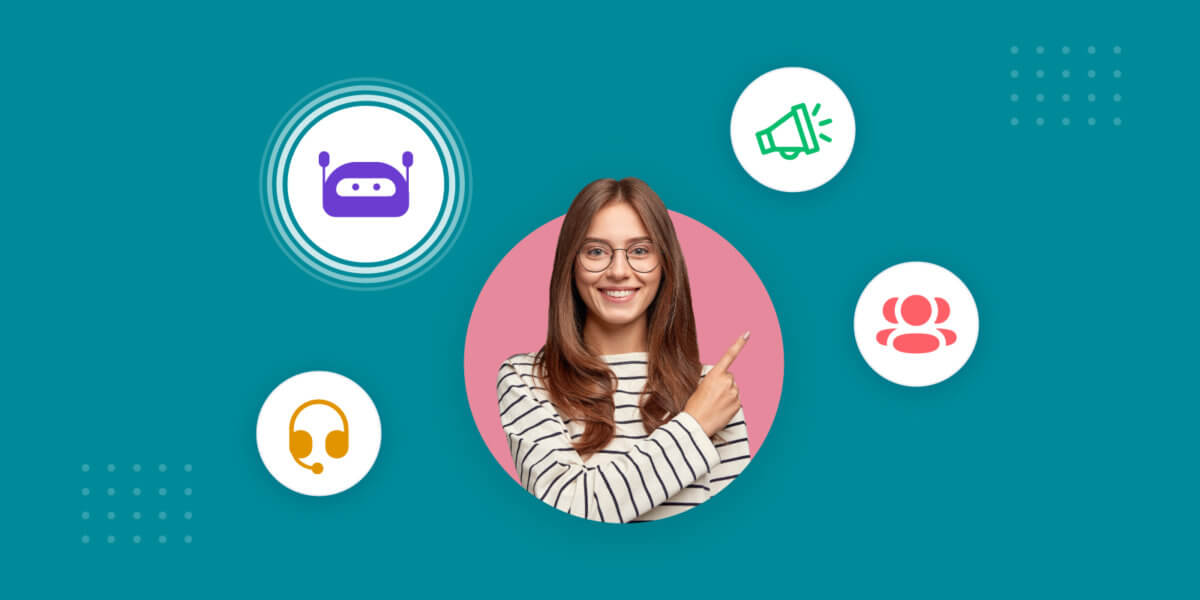The Essential Chatbot Terminology for Beginners

The Essential Chatbot Terminology for Beginners
Knowing chatbot terms can be thrilling, especially now that almost every site comes with its share of terminologies. On the contrary, you might know the feeling of reading something online and having no clue what it means.
Chatbot terminologies may be a mouthful for people with little understanding of the programming language. As a newbie, you will always find yourself hanging. Accordingly, you may opt for Google to translate every phrase into something you can understand. However, this may be time-consuming and tedious.
If you are in this category, you may want to look at these basic chatbot terminologies. They will help you understand various programming terms and phrases you always see on the Internet.
Chatbot
A chatbot is defined as a program or software used to keep users engaged in a conversation using either text or voice interface. For instance, when you shop online and chat with a customer care agent, the chances are you talk to a computer chatbot.
Accordingly, some chatbots apply artificial intelligence concepts. Other people refer to chatbots as conversational software. Many website builders provide integration with chatbots to make them more efficient.
Broadcast
A broadcast is a proactive message sent to various users. For instance, the message is not often a response to a user’s input. In most cases, broadcasts are used as chatbot equivalents, especially in mobile phone push messages.
Other developers may refer to a broadcast as a subscription message.
Channel
Channels are platforms through which chatbot conversations occur. Excellent examples of channels may be Facebook Messenger, Skype, WhatsApp or SMS. In other words, any medium that allows you to hold a chatbot conversation is called a channel in chatbot terminology.
Suggested Reading: What is Omnichannel Support?
Platform
A platform can also be referred to as a channel. It is a platform that hosts a conversation. As discussed earlier, a chatbot conversation can happen through various avenues, such as Facebook Messenger.
Conversational UI
A conversational UI is a user interface based on human speech, which can be written or spoken. Various chatbots use a combination of conversational UI and graphical UI. Accordingly, they do not use links or buttons.
Artificial intelligence (AI)
Artificial intelligence, also known as AI, is a broad concept that cannot be explained in a single article. However, you can understand it using simple terms.
AI is a type of intelligence that machines demonstrate. For instance, humans and animals have natural intelligence, while machines have artificial intelligence.
Artificial Intelligence is also an industry buzzword that covers a wide range of topics. For instance, anything can be described as artificial intelligence as long as it is machine-operated. Accordingly, a simple chatbot with NLU is AI-powered.
AI is a broad discipline that covers other topics such as machine learning and NLU.
Machine Learning
Machine learning (ML) is a subsection of artificial intelligence that offers a platform for chatbots to identify patterns in the human language and learn from previous conversations. Like AI, machine learning is also broad and can be divided into different groups.
Accordingly, machine learning allows chatbots to improve output over time.
Natural Language Processing (NLP)
Natural language processing (NLP) is another branch of artificial intelligence. This concept is used to improve computers’ ability to read, understand, and make sense of the human language. This way, chatbots can understand the context of every conversation and draw conclusive meanings of a user’s inquiry.
For this reason, chatbots can respond to every inquiry if a user makes a spelling error. Additionally, NLP powers other web applications and services, such as Google translate.
Natural Language Understanding (NLU)
Natural language understanding helps understand every meaning of a chatbot utterance since the human language is always complex due to mispronunciations and idioms. However, the NLU strives to sift through the complexities and extract the intended meaning.
Compulsory input
This chatbot term is used on every information required from a user. In other words, a user MUST offer this kind of information for the proper functionality of the chatbot. The conversation will stall if this information is not provided.
Examples of compulsory input include appointment times, room numbers, etc.
Optional input
An optional input is a piece of information that a user can decide to provide or not. The information improves the conversation, though the conversation will still be okay without such inputs. For instance, if you use a filter to get better results, it is considered an optional input.
Decision trees
A decision tree refers to a tree diagram that shows how a decision is made, it is a pathway to a decision made by a machine.
When used in chatbots, a decision tree is a flowchart that shows how a single conversation happens. Some chatbots follow the steps made earlier and recorded in decision trees to make a conversation effective.
Entity
An entity is a variable within every chat that helps a chatbot understand what you want it to do. For instance, if you ask a chatbot to buy a pair of shoes on Friday, the words “shoes” and “Friday” become entities. These phrases help the bot understand you better and formulate a specific answer.
Entity extraction
Entity extraction is the process of making sense of the text for the chatbot to understand it. This happens when a machine adds more structure to the text data, making it easy to read.
Pilot
A pilot is a development stage where a chatbot is given to a group of users to test it. Pilots are essential for chatbots. This is because chatbots have a limited range of user inputs compared to web apps.
Proof-of-concept
This is a development stage where a chatbot is found to be functioning efficiently as long as the input is under artificial constraints. A proof of concept shows a chatbot’s potential. Accordingly, these assets are vital for testing emerging technologies, especially those that are not easily understood.
Flow-based
This term is used to group a chatbot according to how it works. For instance, a flow-based chatbot uses decision trees. This means that a chatbot depends on previous conversations to make the current and future chats better.
Hybrid chat
A hybrid chat is a chat mode in which bots are used together with human efforts to make a conversation smoother and better. For instance, a hybrid bot is often used as a human assistant and helps tackle other issues for the human agent.
Semantic annotation
This is the task of annotating different theories within a text to a chatbot. The Chabot uses these annotations to group new user inputs and draws effective responses.
Intent
A common term in the chatbot world, intent can also be defined as the motive behind every message. For instance, it can be what a user wants to find out. Additionally, intent can be described as the reason why a user engages the chatbot.
Suggested Reading: Humans, Feelings and AI – Understanding User Intent
Intent-based
Intent-based are chatbots that rely on detecting the reason behind every conversation. This happens when the chatbot recognises different entities within a conversation. This way, a chatbot can draw a response that aligns with users’ motives.
Intent classification
Intent classification is the process of grouping every utterance into a predetermined intent category. This helps chatbots match every utterance to specific intent and give an accurate response. Accordingly, this is a better way for the chatbot to continue the conversation and give you the correct answers.
Intent recognition
Intent recognition or intent detection is the process of making sense of information from a user based on his intent. Chatbots use entities to recognize a users’ intention. This helps a chatbot understand the inquiry and offer a relevant response.
Intent recognition is a way machines use to determine what a user wants.
Auto-responder
In chatbot terminology, an auto-responder is the automatic reply system you get when you key in a keyword to a chatbot. For instance, every time you message a business and get a message like, “thanks for contacting XXX business, how may we help you?” The instant message you get comes from an auto-responder.
Classifier
Classifiers are modes that machines use to categorize every user input into various groups. For instance, you can classify stuff into kitchenware, bedding, etc. Similarly, chatbots group every conversation by breaking it down into different intents and entities.
The classification helps chatbots understand your text and give you an accurate answer.
Final Thoughts
As technology evolves and AI continues to rise, you can always expect more terms to crop up. This means that there is no end to learning the basic chatbot terminology. However, this guide to chatbot terminology for beginners should help you demystify the jargon in this field. Now you can get out there and explore the world of unlimited chatbot terms.

Rithesh Raghavan is the Director at Acodez, a Digital Agency in India. Having a rich experience of 15+ years in Digital Marketing, Rithesh loves to write up his thoughts on the latest trends and developments in the world of IT and software development.







